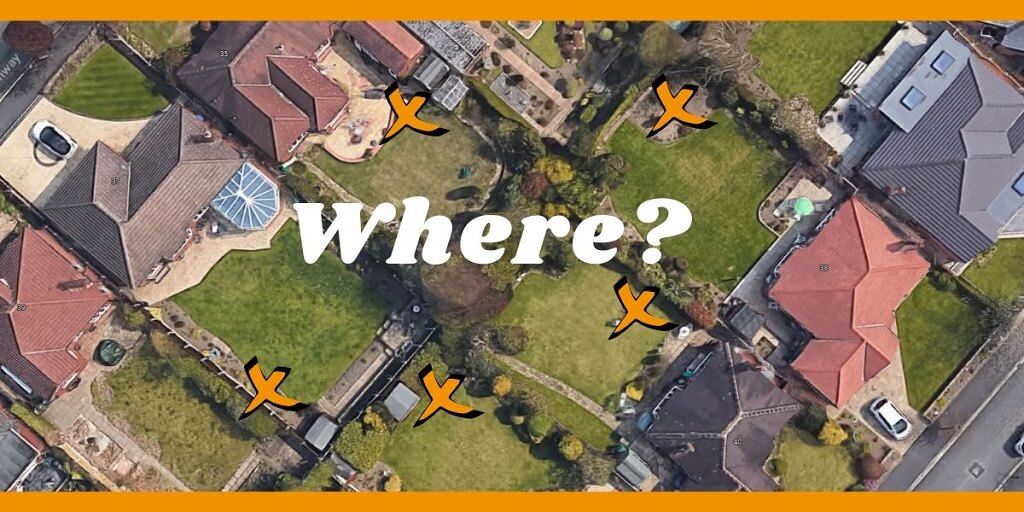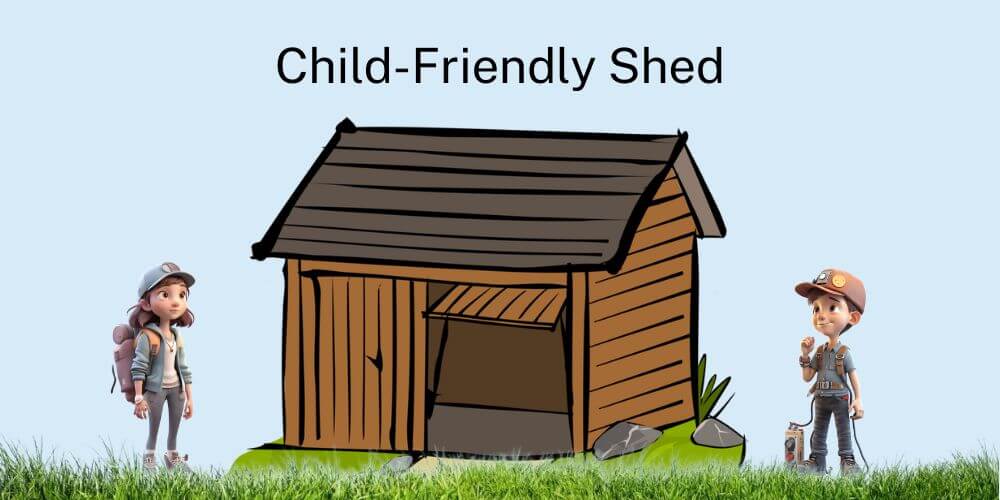Where to put the shed, is a highly asked question when considering placing a new shed, several factors need to be taken into account. These include size and shape, access, sunlight, water and electricity supply, ground conditions, drainage, proximity to neighbors, and aesthetics. Careful consideration of these factors will ensure that your garden shed enhances your gardening experience.
Shed location is as important as the shed itself if you want to make the most out of it.
Size and shape
The size and shape of your garden shed will determine where to put the shed. If you have a small garden, a compact shed that fits neatly against a wall may be the best option. If you have a larger garden, you’ll have more options. You could place your shed in a corner, in the middle of your garden, or against a fence or wall.
Access
Consider how you will access your shed. Will you need to bring in large items like lawnmowers or wheelbarrows? If so, you’ll need a clear path from your garden shed to your home or driveway. Make sure there is enough space to maneuver these larger items. If your garden is gated or fenced, ensure the gate is wide enough to allow easy access for you and your equipment.
Sunlight
Choose a spot for your garden shed that is not in direct sunlight all day long. Sunlight can have a significant impact on a garden shed, both positively and negatively. Here are a few ways sunlight can affect your shed:
- Temperature: Sunlight can heat up the interior of a garden shed, making it uncomfortably warm during the summer months. However, this can be beneficial during the winter when the sun’s rays can help warm up the shed.
- Moisture: Sunlight can help dry out the interior of a garden shed, preventing mold and mildew growth. However, if the shed is located in an area that receives too much direct sunlight, it can dry out the soil around the shed, which can be detrimental to nearby plants.
- Plant growth: If you plan on using your garden shed for starting plants or storing gardening tools, sunlight is essential. Plants need sunlight to grow, and storing tools in a sunny shed can help prevent rust and other damage.
- Fading: If your garden shed is made of materials that are prone to fading, such as wood or certain types of plastic, too much direct sunlight can cause them to lose their color and degrade more quickly.
Water and electricity supply
If you plan to use your shed as a potting shed, having access to water will allow you to easily water your plants, wash your hands, and clean up after gardening. Additionally, having a water supply can make it easier to mix soil and fertilizers for your plants.
On the other hand, having electricity in your shed can be useful if you plan to use it as a workspace. You can power tools and equipment such as saws, drills, and sanders, and have proper lighting for your workspace. Having electricity also allows you to use power tools for DIY projects and hobby activities.
The shed location can solve the problem of needing both water and electricity in your shed, or at least minimize the need for running a long water supply line and an electrical line to the shed.
Ground conditions
Consider the ground conditions in your garden. You’ll want to place your garden shed on a flat, stable surface. If your garden has a slope, you may need to level the ground or build a foundation for your shed. If the ground is soft, you may need to add a layer of gravel or paving stones to stabilize the shed.
Drainage
It’s important to consider drainage when choosing the shed location of your shed because water can cause damage to the shed and its foundation if it is not properly drained away from the structure.
If the shed is installed on ground that is not properly graded, water may collect and pool around the shed, potentially leading to water damage and rot. If the shed is placed at the bottom of a slope, rainwater and runoff may flow towards the shed, increasing the risk of water damage.
Proximity to Neighbors
If you have neighbors, consider how close your garden shed will be to their property. A garden shed that is too close to a neighbor’s home or garden could be a source of tension. Make sure your shed is placed in a way that does not interfere with your neighbor’s property or privacy.
Aesthetics
Consider the aesthetics of your garden shed. Your garden shed should complement your garden’s overall look and feel. Choose a shed that matches the style and colors of your home and garden. If you have a rustic or traditional garden, a wooden shed may be the best option. If you have a modern garden, a sleek metal shed may be a better fit.
By now you can have a better idea of where to put the shed. Remember, choosing the perfect shed location requires careful consideration of the factors above mentioned. Take the time to assess your garden and choose a shed location that will meet your needs and enhance your gardening experience. With the right shed location, your garden shed will be a valuable addition to your garden for years to come.



